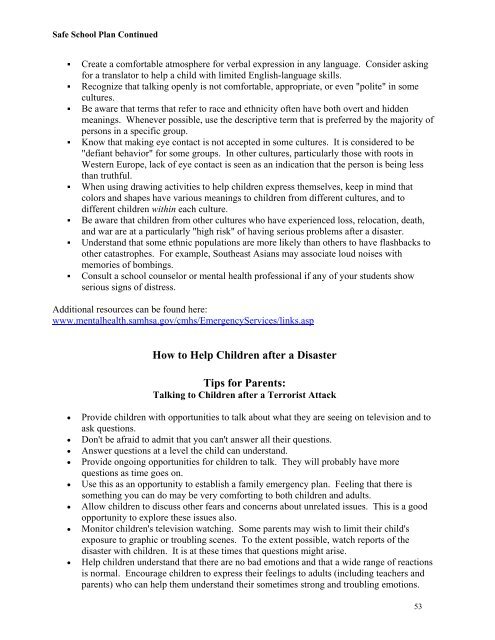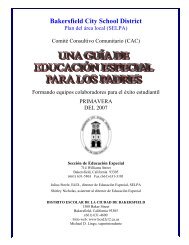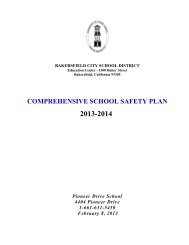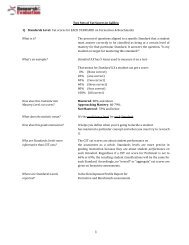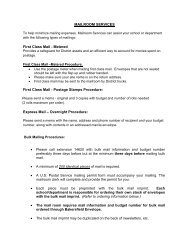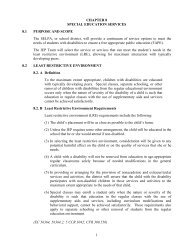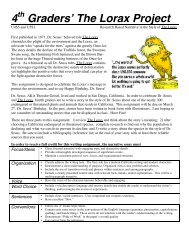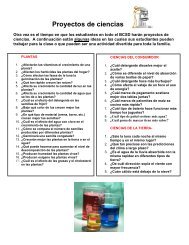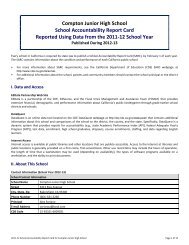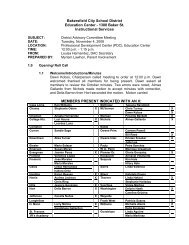Thorner - BCSD Static Server - Bakersfield City School District
Thorner - BCSD Static Server - Bakersfield City School District
Thorner - BCSD Static Server - Bakersfield City School District
You also want an ePaper? Increase the reach of your titles
YUMPU automatically turns print PDFs into web optimized ePapers that Google loves.
Safe <strong>School</strong> Plan Continued• Create a comfortable atmosphere for verbal expression in any language. Consider askingfor a translator to help a child with limited English-language skills.• Recognize that talking openly is not comfortable, appropriate, or even "polite" in somecultures.• Be aware that terms that refer to race and ethnicity often have both overt and hiddenmeanings. Whenever possible, use the descriptive term that is preferred by the majority ofpersons in a specific group.• Know that making eye contact is not accepted in some cultures. It is considered to be"defiant behavior" for some groups. In other cultures, particularly those with roots inWestern Europe, lack of eye contact is seen as an indication that the person is being lessthan truthful.• When using drawing activities to help children express themselves, keep in mind thatcolors and shapes have various meanings to children from different cultures, and todifferent children within each culture.• Be aware that children from other cultures who have experienced loss, relocation, death,and war are at a particularly "high risk" of having serious problems after a disaster.• Understand that some ethnic populations are more likely than others to have flashbacks toother catastrophes. For example, Southeast Asians may associate loud noises withmemories of bombings.• Consult a school counselor or mental health professional if any of your students showserious signs of distress.Additional resources can be found here:www.mentalhealth.samhsa.gov/cmhs/EmergencyServices/links.aspHow to Help Children after a DisasterTips for Parents:Talking to Children after a Terrorist AttackProvide children with opportunities to talk about what they are seeing on television and toask questions.Don't be afraid to admit that you can't answer all their questions.Answer questions at a level the child can understand.Provide ongoing opportunities for children to talk. They will probably have morequestions as time goes on.Use this as an opportunity to establish a family emergency plan. Feeling that there issomething you can do may be very comforting to both children and adults.Allow children to discuss other fears and concerns about unrelated issues. This is a goodopportunity to explore these issues also.Monitor children's television watching. Some parents may wish to limit their child'sexposure to graphic or troubling scenes. To the extent possible, watch reports of thedisaster with children. It is at these times that questions might arise.Help children understand that there are no bad emotions and that a wide range of reactionsis normal. Encourage children to express their feelings to adults (including teachers andparents) who can help them understand their sometimes strong and troubling emotions.53


